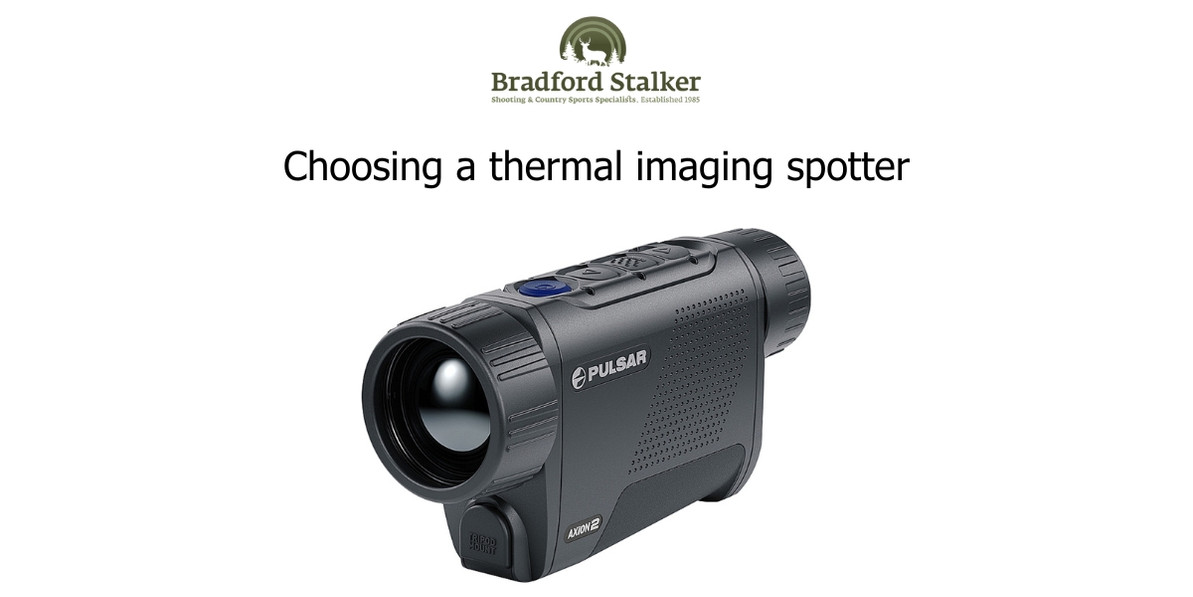Choosing a thermal imaging spotter
Thermal, it’s here to stay so let’s have a look at it.
Firstly there are so many thermal units on the market we can’t possibly review them all. For the purposes of this blog we will talk about thermal spotters as opposed to sights.
Thermal imaging is excellent as a “detection” tool, both for locating foxes and carrying out deer counts and locating deer on 2nd generation restock areas. At night you are not relying on eye shine and not relying on the animal looking at the light or IR unit to give it away, the thermal unit will pick up on the body heat even if the animal is in thick cover so line of sight is not always critical and the units can be used day or night.
The image that you can see through a thermal device is not always clear and sharp as you are looking at a heat signature as opposed to an optical image. Amazing clarity can be obtained at close range say 100 - 150 yards, at extreme distance the object may show as a glowing shape, however the device will give away the presence of a heat source, and with experience you will be able tell what the heat source is likely to be by the way the shape morphs, then you can move in closer or move in with night vision or a lamp to investigate.
Clarity and magnification. As with all digital imaging it is not the magnification range that is important but it is the highest base magnification that gives the clearest image.
Therefore if you have two identical units, one with a mag range of 2.5x–5x and the other with a mag range of 5x–10x, and set both units on 5x mag .. then the unit with the higher base magnification will show the clearest image, this is because on the lesser unit you must zoom up to reach 5x so you are also magnifying the pixels on the screen, this results in less pixels per cm screen area. The greater unit starts at 5x so contains the maximum amount of pixels that the screen area will allow.
Another consideration is FOV (field of view) the lesser magnification the greater FOV, when scanning large areas for deer or fox this makes them easier to pick up .. don’t forget, all you are looking for is a dot, blob or pin point of light to tell you something is there. So it’s a trade off between base magnification and FOV.
The last consideration is sensor type, the two sensors that are generally available are the 384 (XQ) and the 640 (XP) the latter provides a higher screen resolution with more pixels per cm but is considerably more expensive.
Here are two I have tested and that I can thoroughly recommend.
Here are some videos so you can take a look at some animals I recorded through the Helion XQ38F this is equipped with the 384 sensor and is more than adequate for the detection of deer out to over 1,000 metres with a wide FOV it is an excellent compromise between magnification and clarity at 9.8 degrees at 3.1x mag.
look at the Quantum Lite XQ30V a top performer for a budget price with a 384 sensor and a 12.4 degree FOV at 2.5x mag with a detection range on deer of 600 metres.
Also look at the spare IPS5 battery pack with a life of 8 hours for the Hellion models and the Pulsar DNV double battery pack for the Quantum models.
Recent Posts
-
Choosing a thermal imaging spotter
Thermal, it’s here to stay so let’s have a look at it. Firstly there are so many th …Jul 24, 2018 -
How To Clean A Centre Fire Rifle
Why clean a centre fire rifle? The barrel of a centre fire rifle needs cleaning to prolon …Jun 28, 2018



